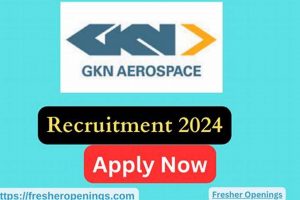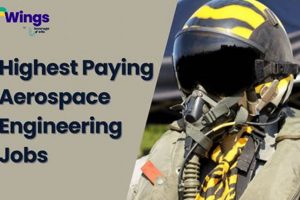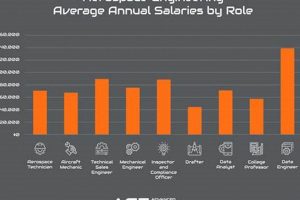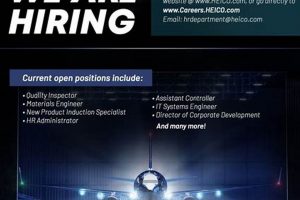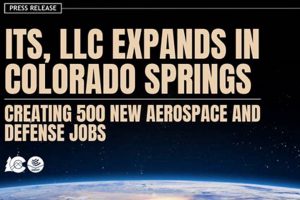Positions within higher education focused on the instruction of aerospace engineering principles, theories, and practices represent a critical component in shaping the next generation of aerospace professionals. These roles typically involve developing and delivering lectures, conducting research, supervising student projects, and contributing to the overall academic environment of a university or college. Individuals holding these positions are experts in fields such as aerodynamics, propulsion, structures, and control systems. An example includes a faculty member responsible for teaching undergraduate courses in aircraft design and conducting research on advanced composite materials.
The presence of qualified instructors in these specialized fields is vital for maintaining a skilled workforce capable of innovation and problem-solving within the aerospace sector. These educators contribute directly to advancements in aerospace technology and research, leading to economic growth and national security. Furthermore, the historical context reveals a growing need for these positions as the aerospace industry expands and becomes increasingly complex, demanding highly trained individuals with a deep understanding of the subject matter.
The following sections will explore the typical responsibilities, required qualifications, career progression, and salary expectations associated with these academic appointments. Furthermore, insights will be provided on strategies for securing such a role and navigating the academic landscape within the aerospace engineering discipline.
Strategies for Pursuing Academic Appointments in Aerospace Engineering
Securing a faculty position in aerospace engineering requires careful planning and strategic execution. The following tips offer guidance for individuals seeking these roles within higher education.
Tip 1: Cultivate a Strong Research Portfolio: A robust research record is crucial. This includes publications in peer-reviewed journals, presentations at conferences, and demonstrable success in securing research funding. Focus on developing expertise in a specific area of aerospace engineering to establish a clear research identity.
Tip 2: Gain Teaching Experience: Prior teaching experience, even in a graduate student capacity, is highly valued. Seek opportunities to serve as a teaching assistant, guest lecturer, or instructor for summer programs. Document teaching effectiveness through student evaluations and peer reviews.
Tip 3: Network Strategically: Attend conferences, workshops, and seminars to connect with faculty members at target institutions. Engage in professional organizations and seek mentorship from established academics in the field. Building relationships can provide valuable insights and potential opportunities.
Tip 4: Tailor Application Materials: Customize the curriculum vitae and cover letter for each specific position. Highlight relevant research experience, teaching qualifications, and alignment with the department’s research focus. Clearly articulate the potential contributions to the institution’s academic mission.
Tip 5: Develop a Compelling Teaching Philosophy: Articulate a clear and concise teaching philosophy that reflects a commitment to student learning and pedagogical innovation. Provide specific examples of teaching methods and strategies that have been effective in the past.
Tip 6: Prepare for the Interview Process: The interview process often involves delivering a sample lecture and participating in meetings with faculty members and administrators. Practice presenting research findings and answering questions about teaching philosophy and research plans. Demonstrate enthusiasm for the position and a strong understanding of the institution’s values.
These strategies provide a framework for aspiring educators to enhance their qualifications and increase their competitiveness within the academic job market. A dedication to research, teaching, and professional development is essential for success in these demanding roles.
The subsequent sections will delve into the long-term career prospects and opportunities for advancement within the academic sphere of aerospace engineering.
1. Educational Qualifications
The pursuit of faculty positions in aerospace engineering is inextricably linked to the possession of advanced educational qualifications. A doctoral degree (Ph.D.) in aerospace engineering, or a closely related field such as mechanical engineering with a focus on aerospace applications, is generally a prerequisite. This reflects the depth of knowledge and research competence demanded of individuals responsible for instructing and mentoring future aerospace engineers. The doctoral degree signifies mastery of advanced concepts, specialized research skills, and the ability to contribute original knowledge to the field. Without this foundational qualification, candidates typically lack the necessary credentials to be considered for teaching and research roles at the university level. For instance, a lecturer tasked with teaching advanced propulsion systems must possess an in-depth understanding of thermodynamics, fluid mechanics, and combustion principles, often acquired through rigorous doctoral-level coursework and research.
Beyond the doctoral degree, the specific area of specialization within aerospace engineering significantly influences career prospects. Faculty positions often target candidates with expertise in high-demand areas such as autonomous systems, advanced materials, space exploration technologies, and sustainable aviation. The alignment between a candidate’s research specialization and the department’s strategic priorities is a critical factor in the hiring process. A demonstrated track record of research productivity, evidenced by peer-reviewed publications and conference presentations, further strengthens an applicant’s profile. Additionally, some institutions may value practical experience gained through internships or industry collaborations, providing candidates with a real-world understanding of engineering challenges. Examples of such experience might include working on the design of aircraft wings for commercial airlines or doing research to improve the longevity of satellite system for government organization.
In summary, robust educational qualifications are essential for securing faculty positions in aerospace engineering. A doctoral degree, coupled with specialized expertise, research experience, and practical exposure, forms the foundation for a successful academic career. The continuous advancement of aerospace technology necessitates a commitment to lifelong learning and a dedication to maintaining expertise in rapidly evolving areas. Challenges persist in ensuring that educational programs adequately prepare graduates for the demands of both academia and industry. By continuously adapting curricula and fostering collaboration between universities and aerospace companies, the field can effectively address these challenges and maintain a strong pipeline of qualified educators and researchers.
2. Research Expectations
Research expectations are a defining characteristic of faculty positions in aerospace engineering. The demands of research significantly influence the role and responsibilities associated with these academic appointments. A direct correlation exists between the level of research activity and the prestige, funding, and overall impact of the employing institution. Aerospace engineering educators are typically expected to contribute to the advancement of knowledge within their respective specializations through scholarly investigation. This often involves securing external funding through grants, publishing research findings in peer-reviewed journals and conference proceedings, and mentoring graduate students in conducting original research. The ability to attract research funding is a particularly crucial indicator of an educator’s research capabilities and contributes to the overall financial health of the department. For example, a professor specializing in hypersonic aerodynamics might be expected to secure grants from government agencies to support research on novel aircraft designs, which will then lead to publications highlighting their findings.
The practical significance of research expectations extends beyond individual career advancement. Research undertaken by aerospace engineering educators directly impacts the evolution of the aerospace industry and its related technologies. The development of new materials, propulsion systems, control algorithms, and structural designs is often driven by research conducted at universities and research institutions. These innovations can lead to increased efficiency, improved safety, and the exploration of new frontiers in space and aviation. Furthermore, research experiences provide valuable learning opportunities for students, preparing them for future roles as engineers and researchers. Active educators facilitate technology transfer from academia to industry, bridging the gap between theoretical knowledge and practical application. For example, the knowledge of composite materials from academia are very valuable for many aircraft manufactoring processes.
In summary, research expectations play a pivotal role in defining faculty appointments in aerospace engineering. They drive the creation of new knowledge, promote innovation, contribute to the economic vitality of the aerospace sector, and provide valuable training for future generations of engineers and scientists. Challenges persist in balancing research demands with teaching responsibilities and service commitments. However, the ability to effectively manage these competing demands is a hallmark of successful aerospace engineering educators. The integration of research into the curriculum ensures that students are exposed to cutting-edge developments and prepared for the challenges of a rapidly evolving field.
3. Teaching Responsibilities
The core function of academic appointments in aerospace engineering is instruction. Educators are expected to impart knowledge, skills, and professional values to students pursuing degrees in the field. This responsibility extends beyond the mere delivery of lectures. It encompasses curriculum development, assessment design, student mentorship, and the creation of a supportive learning environment. The effectiveness of an educator is directly tied to the quality of their instruction and the success of their students. Therefore, strong teaching skills are a critical requirement for individuals seeking faculty positions in aerospace engineering. For example, a lecturer may need to devise a new course on space mission design that combines theoretical analysis with hands-on project work, requiring considerable preparation and pedagogical expertise.
The impact of teaching effectiveness ripples through the aerospace industry. Well-prepared graduates are essential for innovation and leadership in the sector. These roles shape the future workforce by producing well-prepared students, which further advances the entire field by delivering talented employees. Therefore a faculty instructor must be well-versed in the fundamental engineering concepts and have the skillset needed to teach complex ideas to students. A strong foundation is needed to create competent workers in aerospace. Furthermore, aerospace engineering programs benefit from incorporating real-world design and problem-solving exercises that challenge students. These activities can be done by teachers with industry experience. This allows them to develop critical-thinking and innovative skills for tackling real-world challenges. They could even apply what they learn to their careers when they graduate.
In conclusion, teaching responsibilities are paramount to the role of faculty members in aerospace engineering. They are essential for cultivating skilled professionals, advancing the field, and shaping the future of the industry. Challenges in meeting these responsibilities can arise from increasing class sizes, diverse student backgrounds, and the rapid pace of technological change. Despite these obstacles, a commitment to effective instruction remains central to the mission of aerospace engineering education. The constant refining of pedagogical approaches and the integration of innovative teaching techniques are vital to providing students with the knowledge and skills necessary to thrive in the 21st-century aerospace workforce.
4. Industry Connections
The significance of industry connections for those in aerospace lecturer jobs cannot be overstated. These connections serve as a vital bridge between the academic realm and the practical applications of aerospace engineering. Industry relationships provide lecturers with access to real-world challenges, current industry practices, and emerging technologies. This knowledge is then directly translated into more relevant and engaging course content, ensuring that students are exposed to the most up-to-date information and prepared for the demands of the professional field. For example, a lecturer with connections at Boeing might bring real-world case studies related to aircraft design into the classroom, providing students with insights that extend beyond textbook knowledge.
Strong industry ties also facilitate opportunities for student internships, co-op programs, and research collaborations. These experiences provide students with invaluable hands-on experience and exposure to the aerospace industry, significantly enhancing their career prospects. Furthermore, collaborative research projects between university faculty and industry partners can lead to groundbreaking discoveries and innovations. These connections can lead to industry-sponsored projects, where lecturers guide students through actual industry-based problems and allow them to experience the challenges of an industry researcher. An industry partner can give lecturers access to special software or research materials. This also helps prepare the new generations with skills that industries are looking for.
In summary, industry connections are integral to the effectiveness and relevance of aerospace lecturer jobs. These relationships enhance curriculum design, provide practical learning experiences for students, and foster innovation through collaborative research. The development and maintenance of strong industry partnerships are essential for ensuring that aerospace engineering education remains aligned with the evolving needs of the aerospace sector. Challenges in maintaining these connections can arise from limited resources or competing priorities, but the benefits clearly outweigh these costs. By actively engaging with industry, aerospace lecturers can contribute significantly to the preparation of highly skilled engineers and the advancement of the aerospace field as a whole.
5. Institutional Service
Institutional service represents a critical, yet often less visible, component of positions as aerospace engineering educators. It comprises activities undertaken by faculty members to support the functioning and enhancement of their department, college, and university. While teaching and research frequently receive primary emphasis, contributions to institutional service are essential for maintaining a productive and collegial academic environment. These activities range from serving on committees to participating in accreditation processes and contributing to student recruitment efforts. The extent and nature of service expectations can vary significantly across institutions, influenced by factors such as institutional type, size, and strategic priorities. For example, a lecturer might serve on a curriculum committee to help revise course offerings or participate in outreach events to attract prospective students to the aerospace engineering program. The quality and extent of service contributions are often considered during performance evaluations and promotion decisions, impacting career progression within these roles.
The significance of institutional service extends beyond individual faculty members. Active participation in governance and administrative tasks ensures that the voices of aerospace engineering faculty are heard in decision-making processes. This is particularly important in shaping policies related to curriculum, resource allocation, and strategic planning. Moreover, service activities contribute to the overall culture and reputation of the department and institution. A faculty member who dedicates time to mentoring junior colleagues or organizing departmental events can foster a stronger sense of community and improve morale. Contributions to accreditation efforts ensure that the aerospace engineering program meets rigorous quality standards, enhancing its credibility and attracting top students and faculty. For instance, a senior lecturer’s experience is valuable for program evaluations and helping the program obtain and maintain certifications.
In summary, institutional service is an indispensable element of aerospace lecturer jobs, contributing to the effective functioning of academic departments and the overall success of the institution. While challenges exist in balancing service responsibilities with teaching and research obligations, the benefits of active participation in governance, mentorship, and outreach are undeniable. Institutions that recognize and reward service contributions are more likely to attract and retain talented faculty, fostering a collaborative and thriving academic environment that supports excellence in aerospace engineering education and research. Moreover, these contributions play a key role in shaping the future of the field by preparing the next generation of aerospace engineers to address the evolving challenges of the 21st century.
Frequently Asked Questions Regarding Academic Positions in Aerospace Engineering
The following questions address common inquiries and misconceptions related to pursuing careers as educators and researchers in the field of aerospace engineering. The answers provide factual information intended to clarify aspects of these demanding yet rewarding professions.
Question 1: What are the minimum educational requirements to be considered for a lecturer position in aerospace engineering?
A doctoral degree (Ph.D.) in aerospace engineering or a closely related discipline (e.g., mechanical engineering with a strong aerospace focus) is typically the minimum requirement. The degree should be from an accredited institution, and the applicant’s research should align with the department’s needs.
Question 2: Is prior teaching experience essential for securing such a position?
While not always explicitly required, prior teaching experience is highly advantageous. Demonstrable experience as a teaching assistant, guest lecturer, or instructor is viewed favorably. Evidence of teaching effectiveness, such as student evaluations, can significantly strengthen an application.
Question 3: What role does research play in a lecturer’s responsibilities?
The emphasis on research varies across institutions. Some positions prioritize teaching, while others require significant research contributions. At research-intensive universities, securing external funding and publishing in peer-reviewed journals are often expected. Even in teaching-focused roles, maintaining scholarly activity is generally encouraged.
Question 4: How important are industry connections for a career in academia?
Industry connections can be valuable, particularly for facilitating research collaborations, securing funding, and providing students with relevant real-world experiences. Maintaining connections with industry professionals can also enhance the curriculum and ensure its relevance to current industry practices.
Question 5: What is the typical career progression for individuals starting as lecturers?
Career progression varies depending on the institution and the individual’s performance. In some cases, lecturers can advance to senior lecturer positions or tenure-track professorships. Promotion often depends on factors such as teaching effectiveness, research productivity, and service contributions.
Question 6: What are the primary factors influencing salary expectations for aerospace engineering lecturers?
Salary expectations are influenced by factors such as the institution’s location, prestige, and financial resources, as well as the candidate’s qualifications, experience, and research record. Public universities often have salary scales based on rank and years of service, while private institutions may offer more flexibility.
The preceding responses offer a general overview of key considerations related to academic careers in aerospace engineering. It is essential to thoroughly research specific institutions and positions to gain a comprehensive understanding of expectations and opportunities.
The following section will provide resources for those interested in exploring potential positions and further developing their academic careers.
Conclusion
The preceding sections have provided a comprehensive overview of positions focused on instruction within aerospace engineering, commonly referred to as “aerospace lecturer jobs.” These roles encompass a diverse range of responsibilities, including teaching, research, and service, all of which contribute to the advancement of the field and the preparation of future aerospace professionals. The attainment of advanced educational qualifications, demonstrable teaching effectiveness, and a commitment to scholarly activity are crucial for success in these demanding positions. Furthermore, the establishment of strong industry connections and active participation in institutional service contribute to the overall impact and career trajectory of aerospace engineering educators.
The continued evolution of aerospace technology necessitates a dedicated cohort of qualified instructors and researchers. Individuals pursuing “aerospace lecturer jobs” play a vital role in shaping the future of the industry by imparting knowledge, fostering innovation, and mentoring the next generation of engineers and scientists. A commitment to excellence in teaching, research, and service is essential for contributing to the advancement of aerospace engineering and ensuring its continued relevance in a rapidly changing world.


![Find Aerospace Deburring Jobs Now - [Location] Hiring! Innovating the Future of Flight with Reliable Aviation Solutions Find Aerospace Deburring Jobs Now - [Location] Hiring! | Innovating the Future of Flight with Reliable Aviation Solutions](https://mixaerospace.com/wp-content/uploads/2025/12/th-747-300x200.jpg)
